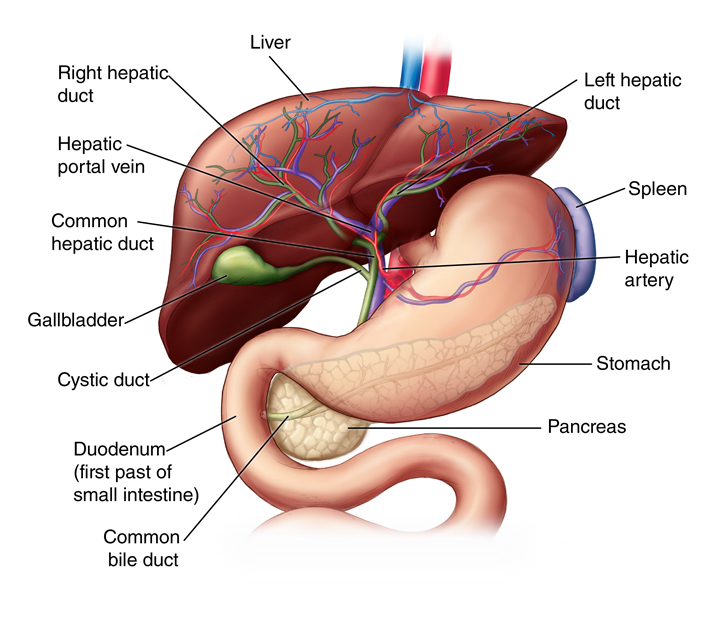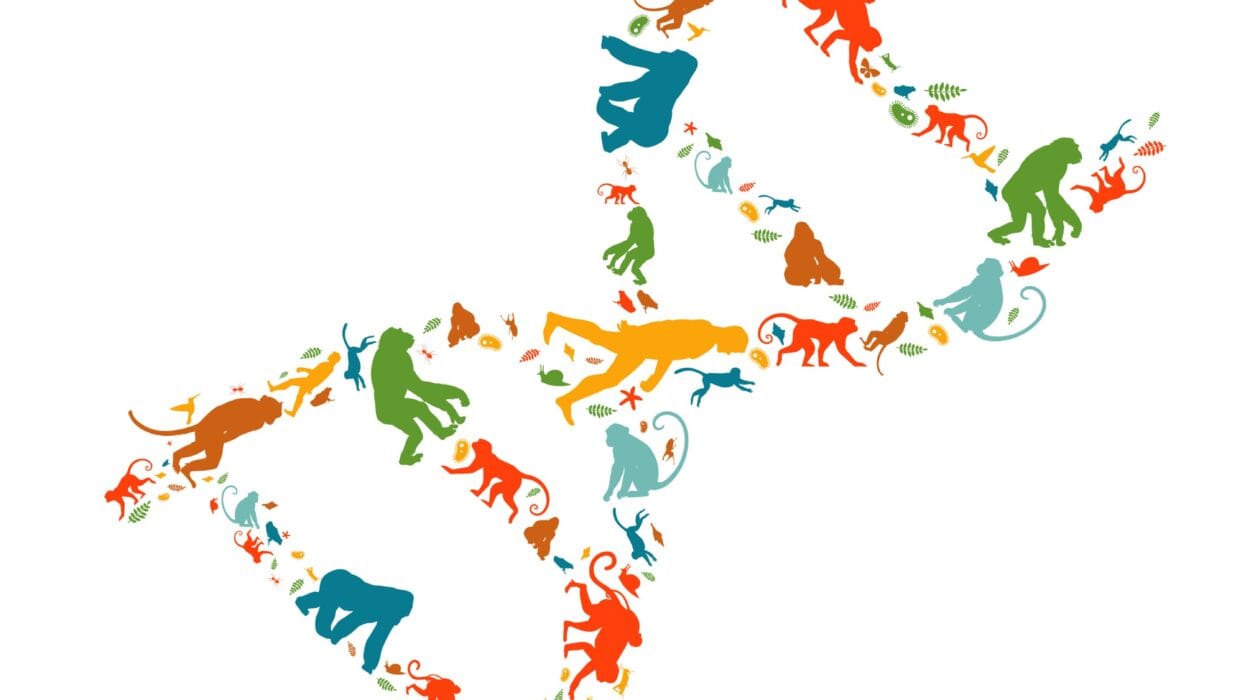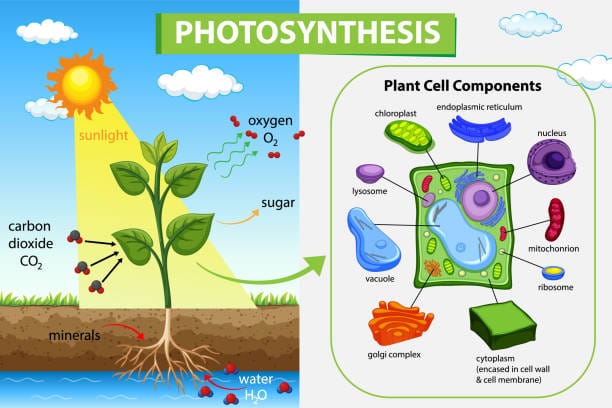Life on Earth is a mesmerizing story, one that stretches across billions of years. From the simplest molecules to the complex beings we see today, the story of life’s evolution is filled with mystery, grandeur, and wonder. The planet’s journey, brimming with triumphs and challenges, has led to an astonishing diversity of life forms. This evolution didn’t happen overnight, nor in a linear fashion—rather, it’s a tale of unpredictable twists and turns, both grand and minuscule.
In this journey through time, we’ll trace the evolution of life on Earth, examining key milestones that have shaped the very fabric of our existence. Let’s embark on a timeline that stretches from the birth of our planet to the present day.
The Formation of Earth (4.5 Billion Years Ago)
The story of life begins not with life itself, but with the formation of Earth. Approximately 4.5 billion years ago, our planet came into being as part of the formation of the Solar System. A swirling cloud of gas and dust collapsed under its own gravity, forming the Sun and the planets, including Earth. For millions of years, Earth was a molten mass, bombarded by asteroids and subjected to extreme temperatures. Yet, in this chaos, the ingredients necessary for life began to coalesce.
The earliest moments of Earth’s history were hostile. There was no atmosphere to protect from radiation, and the surface was constantly being reshaped by volcanic eruptions. But over time, Earth began to cool. As the planet’s surface solidified, water vapor in the atmosphere condensed, forming the first oceans. These primordial oceans would eventually become the cradle of life.
The Origins of Life (3.8 to 4.0 Billion Years Ago)
At some point between 3.8 and 4.0 billion years ago, life began to emerge from this early, chaotic environment. The exact process is still a mystery, often referred to as abiogenesis, but scientists believe that life began as simple molecules formed more complex organic compounds. These compounds eventually led to the first self-replicating molecules, likely RNA or simple proteins.
The first living organisms were probably simple single-celled microbes, possibly resembling today’s bacteria or archaea. These organisms would have been anaerobic, meaning they didn’t require oxygen, which was scarce at the time. Life began in the deep ocean, in warm, mineral-rich environments like hydrothermal vents. The conditions at these vents could have provided the energy required for chemical reactions that ultimately led to the formation of life.
The Rise of Photosynthesis (3.5 Billion Years Ago)
One of the most transformative moments in Earth’s history occurred around 3.5 billion years ago, with the advent of photosynthesis. Early microorganisms, such as cyanobacteria, began to harness the energy of the Sun and convert carbon dioxide and water into oxygen and sugar. This process, known as oxygenic photosynthesis, was not only vital for the organisms that carried it out but for all life on Earth.
Before photosynthesis, Earth’s atmosphere was almost entirely devoid of oxygen. But as photosynthetic microbes proliferated, they began releasing oxygen into the atmosphere. This oxygen would ultimately accumulate and lead to one of the most significant shifts in the history of life—the Great Oxygenation Event.
The Great Oxygenation Event (2.4 Billion Years Ago)
Approximately 2.4 billion years ago, oxygen levels in Earth’s atmosphere began to rise dramatically. This shift had profound effects on life. While oxygen is essential for most life forms today, early life on Earth was adapted to low-oxygen conditions. The increase in oxygen led to the extinction of many anaerobic organisms that couldn’t survive in an oxygen-rich environment.
However, oxygen also paved the way for more complex life forms. The rise of oxygen set the stage for the development of aerobic respiration, a more efficient way to generate energy, which would later fuel the evolution of eukaryotic cells and multicellular life. The Great Oxygenation Event also had an important role in shaping the planet’s geology, contributing to the formation of banded iron formations and the overall alteration of the Earth’s surface.
The Emergence of Eukaryotes (2.0 Billion Years Ago)
Around 2.0 billion years ago, life took a significant leap forward with the appearance of eukaryotic cells. These cells are far more complex than the prokaryotic cells of bacteria and archaea. Eukaryotic cells contain a nucleus and other membrane-bound organelles, such as mitochondria and chloroplasts. This complexity allowed for greater specialization and division of labor within the cell, which in turn paved the way for more complex organisms.
The origin of eukaryotes is often linked to the endosymbiotic theory, which suggests that some of the organelles inside eukaryotic cells, particularly mitochondria and chloroplasts, were once free-living bacteria that formed symbiotic relationships with larger host cells. This mutually beneficial partnership eventually evolved into the highly integrated eukaryotic cell.
Multicellularity and the First Complex Life Forms (1.5 Billion Years Ago)
With the evolution of eukaryotic cells, the stage was set for the emergence of multicellular life. Around 1.5 billion years ago, the first multicellular organisms appeared. These early multicellular organisms were likely simple colonies of eukaryotic cells, where each cell carried out similar functions.
However, over time, some of these organisms began to specialize, with different cells taking on specific roles. This specialization was key to the development of more complex life forms. Some of these early multicellular organisms resembled today’s algae, but over millions of years, they would evolve into more intricate life forms, including plants, animals, and fungi.
The appearance of multicellularity was a monumental milestone in the history of life. It allowed for the development of larger and more complex organisms, and paved the way for the diversification of life during the later stages of Earth’s evolutionary history.
The Cambrian Explosion (541 Million Years Ago)
Around 541 million years ago, during the Cambrian Period, life on Earth underwent one of the most dramatic bursts of evolutionary change in its history—what scientists call the Cambrian Explosion. During this time, the Earth saw the sudden appearance of a wide variety of animal life, including many of the major animal phyla we recognize today.
The Cambrian Explosion marks the emergence of hard-bodied animals with shells, exoskeletons, and other protective features. Organisms like trilobites, early arthropods, and the ancestors of modern chordates appeared in great abundance, leaving behind rich fossil records. This period saw the evolution of most of the major groups of animals, including early fish, early arthropods, and the first vertebrates.
One of the key factors that may have driven this explosion of life was the increasing oxygen levels in the atmosphere, which provided the energy needed for more complex organisms to evolve. Additionally, the development of new genetic innovations, such as the rise of Hox genes that control body plans, likely played a crucial role in this rapid diversification.
The Evolution of Vertebrates (500 Million Years Ago)
The vertebrates—animals with backbones—first appeared around 500 million years ago, in the early Paleozoic Era. The first vertebrates were jawless fish, which later evolved into jawed fish, the ancestors of all modern vertebrates, including mammals, birds, reptiles, and amphibians.
One of the defining features of vertebrates is their skeleton, which provides structural support and protection for internal organs. The evolution of vertebrates also marked the rise of more complex behavior, with nervous systems capable of greater coordination and more sophisticated responses to the environment.
Fish dominated the oceans for hundreds of millions of years, but eventually, some species began to venture onto land. This transition was a monumental event in the history of life.
The Colonization of Land (400 Million Years Ago)
Around 400 million years ago, the first plants began to colonize land, followed by the first terrestrial animals. The process of moving from water to land was gradual, but by the end of the Silurian Period, the Earth was home to early land-dwelling plants and arthropods, such as millipedes and scorpions.
By the Devonian Period (about 380 million years ago), the first vertebrates, fish-like creatures called tetrapods, crawled out of the oceans and began to adapt to terrestrial life. These tetrapods evolved from lobe-finned fish and were the ancestors of all modern amphibians, reptiles, birds, and mammals.
The evolution of lungs and limbs allowed these early tetrapods to breathe air and move on land. This transition, however, was not without its challenges. Tetrapods had to evolve new ways of reproducing outside of water, developing internal fertilization and eggs that could survive on land. These adaptations would ultimately lead to the diverse range of terrestrial animals we see today.
The Age of Dinosaurs (230 to 65 Million Years Ago)
The Mesozoic Era, often called the “Age of Dinosaurs,” spanned from approximately 230 to 65 million years ago. This period saw the rise and eventual dominance of dinosaurs, reptiles that varied widely in size, shape, and lifestyle. Dinosaurs ruled both the land and the skies, evolving into herbivores, carnivores, and omnivores.
The Mesozoic Era also saw the evolution of the first mammals, though they were small and relatively inconspicuous compared to the dinosaurs. Birds, which are considered the descendants of certain groups of dinosaurs, also emerged during this period, marking a significant leap in the evolution of vertebrates.
Dinosaurs would dominate Earth for over 160 million years, but their reign came to an end with a mass extinction event around 65 million years ago. This extinction, likely caused by a combination of volcanic activity, climate change, and an asteroid impact, wiped out nearly 75% of all life on Earth, including the dinosaurs.
The Rise of Mammals and Birds (65 Million Years Ago to Present)
Following the extinction of the dinosaurs, mammals began to flourish. The absence of large reptiles allowed mammals to diversify and take on new ecological roles. The early mammals were small, nocturnal creatures, but over time, they evolved into a wide variety of forms, from the massive woolly mammoths of the Ice Age to the tiny shrews of today.
During the same period, birds—descendants of theropod dinosaurs—evolved to fill ecological niches left vacant by the extinction of their dinosaur ancestors. The evolution of feathers, flight, and other adaptations allowed birds to thrive in a wide range of environments.
Humans, the most complex organisms to ever live on Earth, evolved relatively recently in Earth’s history. Homo sapiens, the species we belong to, emerged around 200,000 years ago in Africa. Our ancestors evolved from primates, and over time, they developed advanced cognitive abilities, social structures, and the ability to create and use tools.
Conclusion: The Ongoing Evolution of Life
The evolution of life on Earth is an ongoing process, one that continues to unfold with each passing day. From the first molecules to the rise of complex animals, plants, and humans, life on Earth has been shaped by countless forces—some predictable, others entirely unforeseen. Today, we are living in a new age, one where humans have become the dominant species. But even now, life continues to evolve in response to changing conditions, creating new opportunities for life forms to adapt and thrive.
As we look to the future, we must remember that the story of life on Earth is far from over. Each generation brings with it new possibilities and challenges, and the evolutionary process is far from complete. What the future holds remains unknown, but it is certain that life, in all its forms, will continue to evolve and adapt as it has done for billions of years.






